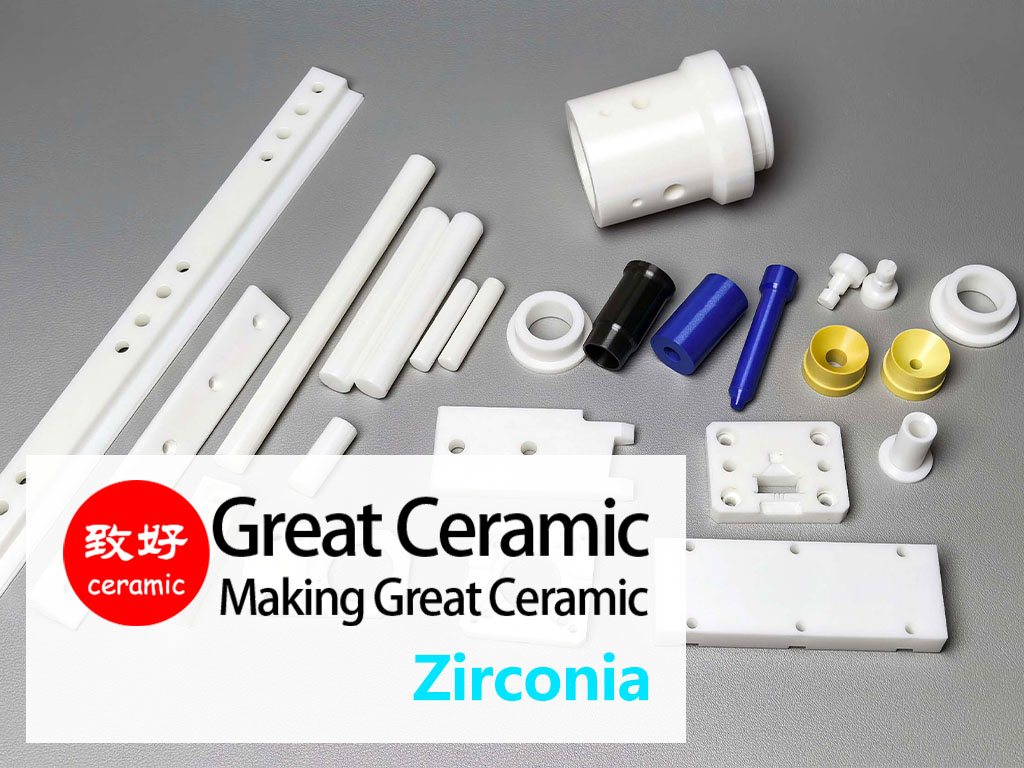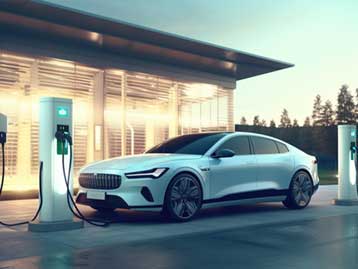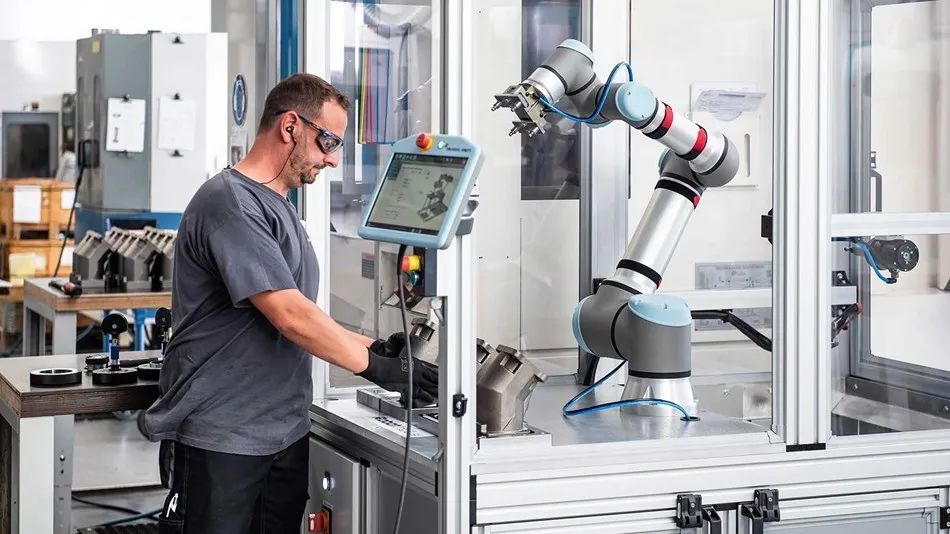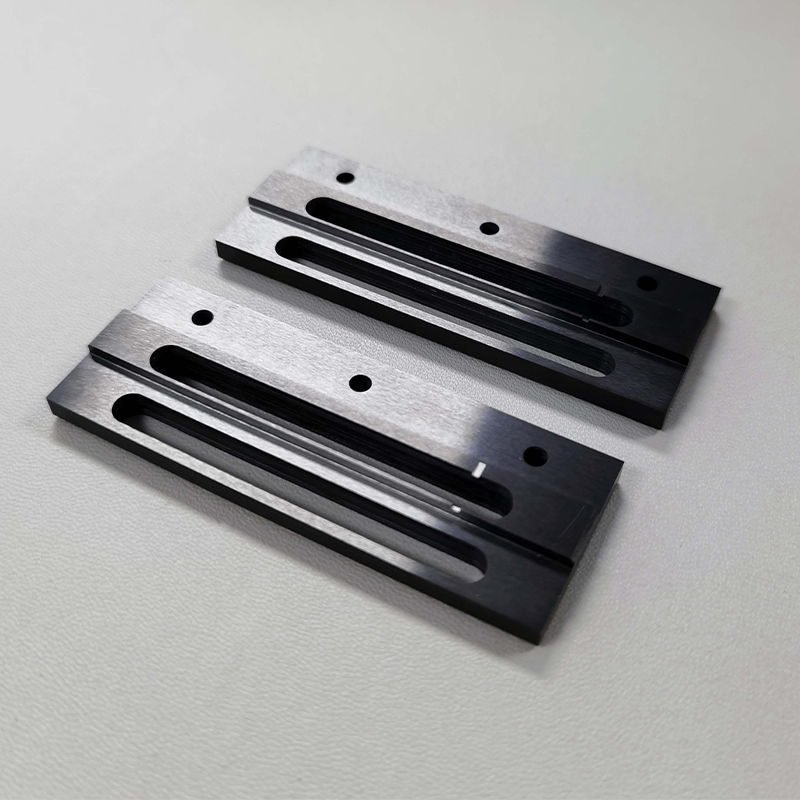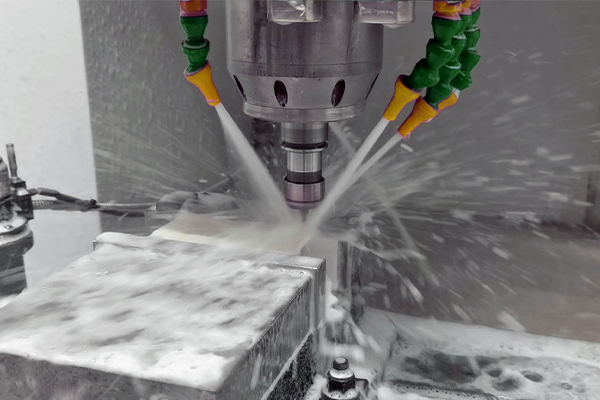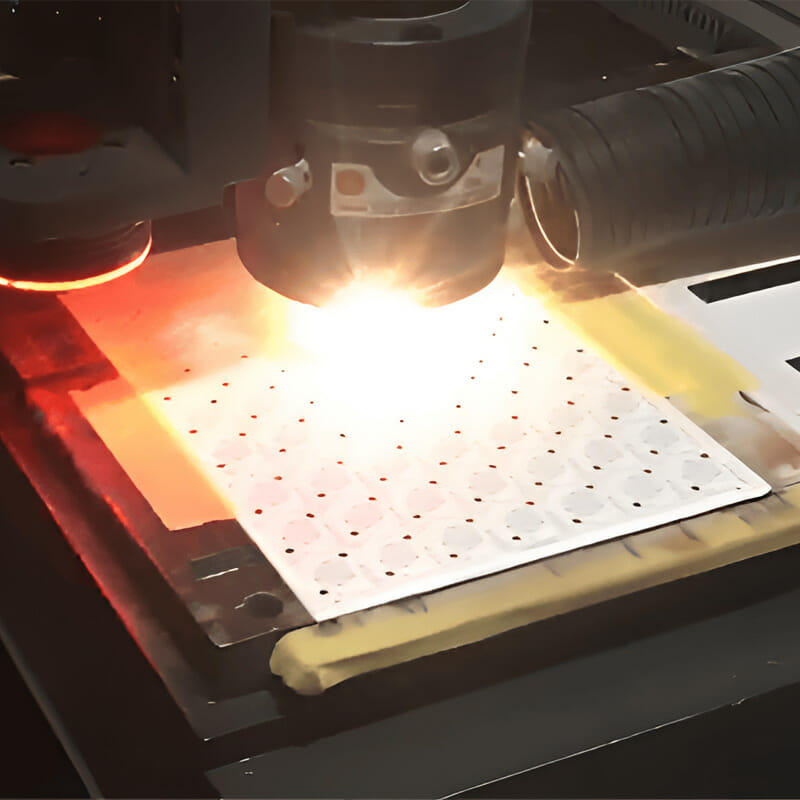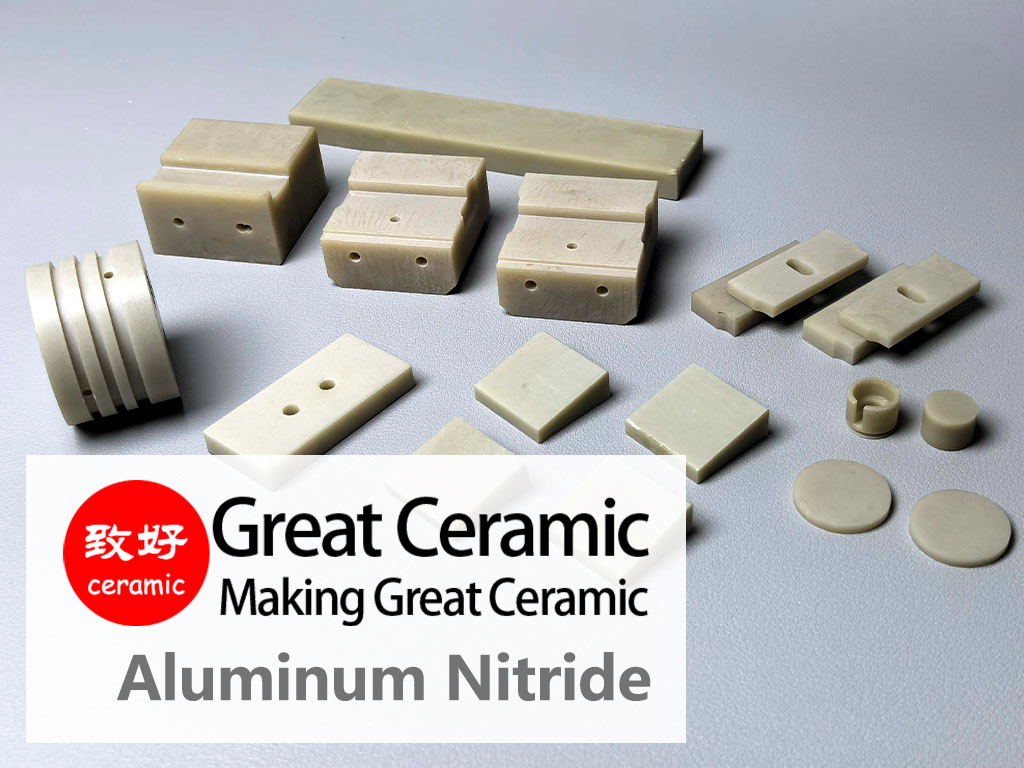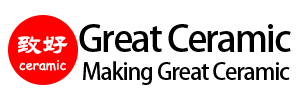Zirconia (ZrO₂) Ceramics
Zirconia (ZrO₂), also known as zirconium oxide ceramic, is one of the most advanced technical ceramics available today. With outstanding mechanical strength, fracture toughness, wear resistance, and chemical stability, zirconia material has become indispensable across high-tech industries. Known as the "ceramic steel," zirconia ceramics combine the hardness of technical ceramics with mechanical reliability that surpasses most oxide ceramics.
At Great Ceramic, we specialize in precision machining and customized fabrication of zirconia ceramic components, ensuring performance-driven solutions for industries such as electronics, aerospace, chemical engineering, automotive, and medical devices. Our advanced processing capabilities, strict quality control, and engineering expertise enable us to provide the best zirconia ceramics tailored to client specifications.
Whether you are searching for zirconia ceramic material properties, high-precision zirconia ZrO₂ ceramic tubes, or customized black zirconia ceramic parts, Great Ceramic stands out as a trusted partner in advanced ceramics manufacturing.
Skip to
Advantages | Applications | Material Grades | Properties | Cases | Machining | FAQs | Related
Advantages of Zirconia Ceramic
Zirconia ceramic properties offer a compelling combination of characteristics that make it superior to many other materials:
At Great Ceramic, we enhance these inherent advantages through our proprietary processing techniques, delivering best zirconia ceramics with consistent performance and reliability.
Grades of Zirconia Material Available
At Great Ceramic, we provide a variety of zirconia materials, each engineered for different performance requirements:
Yttria-Stabilized Zirconia Ceramics (Y-PSZ)
Yttria-Stabilized Zirconia Ceramics (Y-PSZ) are a class of high-performance ceramic materials that utilize yttria (Y₂O₃) as a stabilizer to partially stabilize the tetragonal crystal structure. They are also the most common zirconia ceramics. Yttria doping effectively addresses the phase transformation cracking that occurs in pure zirconia at high temperatures, resulting in excellent mechanical properties and long-term stability.
Key Features
Main Applications
Production and Processing
Yttria-stabilized zirconia ceramics are typically made from nano-sized zirconia powder doped with 3-8 mol% yttria. They are produced through isostatic pressing or injection molding, followed by high-temperature sintering to achieve a dense microstructure. To meet the demands of precision parts, high-precision machining processes such as diamond grinding, ultrasonic machining, or laser cutting are often required.
Magnesia-Stabilized Zirconia Ceramics (Mg-PSZ)
Magnesia-Stabilized Zirconia ceramics (MgO-PSZ) are partially stabilized zirconia (PSZ) stabilized with magnesium oxide (MgO). They combine the high strength and toughness of zirconia with phase transformation toughening, resulting in excellent crack resistance and wear resistance, making them a key material in structural ceramics.
Key Features
Main Applications
Production and Processing Technology
Mg-PSZ utilizes high-purity zirconium oxide powder doped with approximately 8–10 wt% magnesium oxide. A dense microstructure is achieved through isostatic pressing and high-temperature sintering. The presence of a stable cubic phase and a partially transformable tetragonal phase within its grains contributes to its high toughness. Due to its extremely high hardness, processing typically requires precision grinding with a diamond wheel or laser processing.
Alumina-Toughened Zirconia Ceramics (ZTA)
Zirconia-Toughened Alumina (ZTA) is a composite ceramic material consisting of a high-content alumina (Al₂O₃) matrix doped with a certain proportion of zirconium oxide (ZrO₂) particles. The addition of zirconium oxide significantly improves the fracture toughness and crack resistance of ZTA, making it an excellent choice for applications requiring high strength, high wear resistance, and high corrosion resistance.
Key Features
Typical Applications
Production and Processing
ZTA is produced by uniformly mixing alumina powder with a specific proportion of zirconium oxide powder (typically 10–20%), dry pressing, isostatic pressing, or injection molding, and then sintering at high temperatures. The resulting microstructure shows a uniform distribution of zirconium oxide particles within the alumina matrix, resulting in a toughened finish. Due to its high hardness, machining typically requires diamond tools or laser processing to ensure precision.
Alumina-Toughened Zirconia Ceramics (ATZ)
Alumina-Toughened Zirconia Ceramics (ATZ) are composite ceramics composed of a zirconium oxide (ZrO₂) matrix doped with a certain proportion of alumina (Al₂O₃) particles. Unlike ZTA (zirconia-toughened alumina), ATZ is primarily composed of zirconium oxide. The addition of a small amount of alumina further enhances its strength, hardness, and wear resistance while maintaining good fracture toughness.
Key Features
Typical Applications
Production and Processing
ATZ is typically made from a high-purity Y-TZP powder matrix with a small amount (typically 10–20 wt%) of alumina added. The material is formed by isostatic pressing, injection molding, or tape casting, followed by high-temperature sintering. In the sintered microstructure, alumina is evenly dispersed in the zirconia matrix, strengthening the grain boundaries and enhancing wear resistance. Due to its high hardness and toughness, processing requires diamond grinding, ultrasonic machining, or laser precision cutting.
Zirconia Material Properties
Great Ceramic offers a variety of zirconia ceramics materials for customers to choose from. The following values are typical material properties and may vary depending on product configuration and manufacturing process. For more details, please feel free to contact us.
Mechanical Properties
| Properties | Unit | Y-PSZ | Mg-PSZ | ZTA |
| Colour | —— | White | Yellow | White |
| Density | g/cm³ | 6.05 | 5.7 | 4.1~4.38 |
| Hardness | GPa | 12.5 | 11.8 | 15 |
| Compressive Strength | MPa | 2100 | 1750 | 2350 |
| Flexural Strength | MPa | 850 | 900 | 700 |
| Fracture Toughness | MPa・m1/2 | 4~5 | >7.0 | 3.5 |
| Modulus of Elasticity | GPa | 200 | 200 | 310 |
| Poissons Ratio | —— | 0.3 | 0.3 | 0.26 |
Thermal Properties
| Properties | Unit | Y-PSZ | Mg-PSZ | ZTA |
| Maximum Use Temperature | ℃(No load) | 1000 | 1000 | 1500 |
| Thermal Conductivity @ 25°C | W/(m・K) | 2 | 2.2 | 20 |
| Thermal Expansion a at 20–400°C | 1 x 10-6/°C | 10 | 10.2 | 8 |
| Specific Heat | J/(kg・K) | 460 | 400 | 720 |
| Thermal Shock Resistance | ℃(Put in water) | 300 | 350 | 300 |
Electrical Properties
| Properties | Unit | Y-PSZ | Mg-PSZ | ZTA |
| Dielectric Constant | 1MHz | 30 | 28 | 10.2 |
| Dielectric Strength(6.35mm) | ac-kV/mm | 9 | 9.4 | 9 |
| Dielectric Loss | 1MHz | 16 x 10-4 | 10 x 10-4 | 20 x 10-4 |
| Volume Resistivity @ 25°C | Ω・cm | >1013 | >1012 | >1014 |
| Volume Resistivity @ 500°C | Ω・cm | >103 | >103 | >104 |
Zirconia Ceramics application cases
Great Ceramic's zirconium oxide (ZrO₂) ceramics are renowned for their exceptional high strength, excellent fracture toughness, good wear resistance, and chemical stability. They are widely used in industries requiring the highest mechanical properties and durability. Compared to other structural ceramics, zirconia ceramics possess near-metallic toughness and a unique phase transformation toughening mechanism, making them an advanced ceramic material that combines both hardness and reliability.
Major Applications of Zirconia Ceramics:




Zirconia Ceramic Machining
Zirconia ceramics are known for their exceptional toughness, high strength, and remarkable wear resistance, making them one of the most advanced ceramic materials for precision engineering. Great Ceramic provides comprehensive zirconia ceramic machining capabilities, delivering outstanding performance, durability, and accuracy tailored to customer needs.
During processing, we employ diamond grinding, precision milling, and fine polishing techniques to achieve micron-level tolerances and superior surface finishes. These capabilities ensure that zirconia ceramic parts meet the stringent structural precision and aesthetic requirements demanded by industries such as medical devices, aerospace, and advanced machinery.
With years of technical expertise and advanced equipment, Great Ceramic not only supplies standard parts but also specializes in customized, complex structural components that require high reliability and long service life.
Frequently Asked Questions
Related products
Why Choose Great Ceramic for Zirconia Materials?
When it comes to zirconia material properties and customized solutions, Great Ceramic delivers the most reliable zirconia ceramics on the market.

